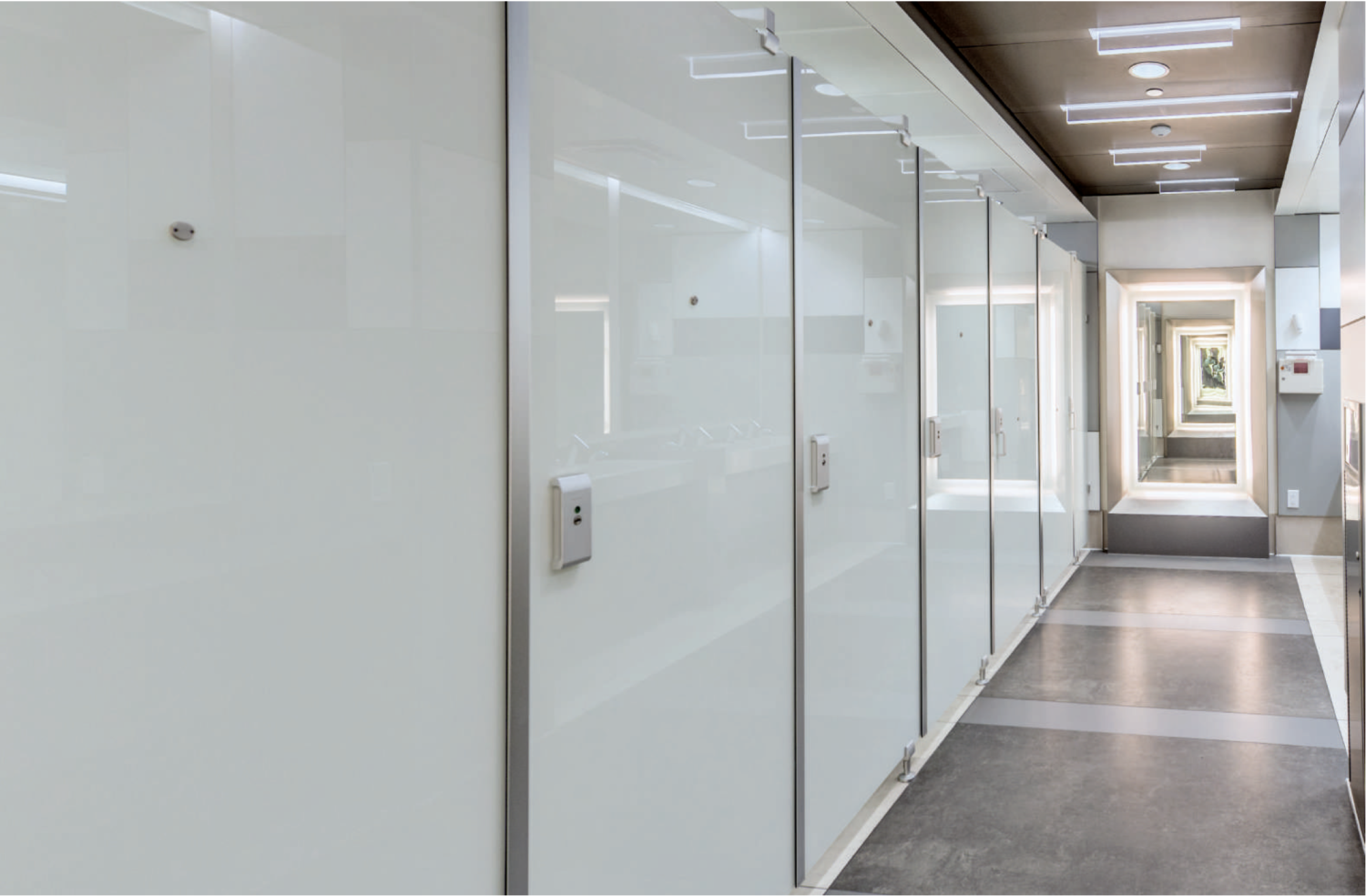Universal disdain for American public Restrooms has been documented on the internet for years; tourists have blogged in horror, designers have authored think-pieces, and BuzzFeed has made some memes. However, issues of privacy, cleanliness, social marginalization and accessibility have dominated discussions about public restrooms since the early 20th-century introduction of the “ladies” room in the American workplace. Almost 100 years later, and public restroom design remains largely unchanged and highly problematic. In short, American Public Restrooms…suck.
In this blog series, we’re taking on the all-too-taboo topic of restrooms and addressing the problems presented by their dated archetypes with contemporary solutions.
Our first examination of public restrooms considers an issue heightened by COVID-19: cleanliness. We’ve all been there: out and in urgent need of a bathroom visit, only to find a restroom that looks like something out of a nightmare. Unfortunately, this is not a once-in-a-lifetime occurrence; dirty public restrooms are nothing short of the norm. Under normal circumstances most people try to avoid using public restrooms, throw a global pandemic into the mix and the idea is downright terrifying.
High-touch surfaces and compact spaces are two of the many reasons public restrooms are considered to be a hotbed for germs. Despite an increased effort to sanitize, the basic features that comprise public restrooms make optimal cleanliness unattainable.
We’re breaking down some of the most pressing hygiene concerns in public restrooms and exploring ideas, products, and practices to keep squeaky clean.
THE BASICS
By now, we should all be seasoned pros when it comes to protective health measures in public: wear a form-fitting mask; wash your hands for at least 20 seconds with soap and water; use hand-sanitizers with at least 60% alcohol; keep at least six feet from strangers, and always cover your mouth when coughing and sneezing.
Public spaces should be cleaned well and often with soap, water, and disinfectant. When using disinfectants, the products instructions should be read and followed accordingly (most require keeping surface wet for a period of time, and the use of gloves to protect the skin)

DON’T TOUCH
High-touch surfaces are breeding grounds for germs and bacteria, and their constant use result in the spread of illnesses. Eliminating touch features in a restroom reduces the risk of contamination and the need for constant sanitization. Automated elements such as doors, toilets, faucets, soap dispensers, and hand dryers prevent people from transmitting germs. Additionally, automatic hand washing stations ensure the use of proper amounts of soap and bacteria-killing water temperatures, and thorough hand drying. According to experts, wet and damp hands spread germs more easily than dry hands; forceful and warm hand-dryers quickly dry, and reduce the need to touch wasteful paper-towel dispensers.


KEEP IT QUICK
Inconvenient restroom layouts can cause congestion, overlapping paths, and long lines. In order to eliminate a prolonged restroom experience and exposure, create a logical traffic pattern through the location of wash stations, mirrors and cubicles. Wash stations that have faucets, soap dispensers, and hand dryers all in one area reduce the need for movement throughout the space, and allow users to quickly sanitize and dry their hands and leave the restroom.
Vanity mirrors should have a designated location away from wash stations so as to not disrupt or prevent users from washing their hands. Eliminating counter space and using large sink basis not only prevents dirty sink water (bacteria’s favorite hang-out spot) on surface areas, but inhibits users from placing their items on shared spaces.
MATERIALS MATTER
Choosing the correct material can reduce the presence of germs. Soft and porous materials absorb water and air germ-infected particulates, causing bacteria harvest in the small divots and pores of these surfaces. Hard materials such as glass, stainless steel, and certain plastics (such as our chpl) are difficult to scratch and crack, resulting in an effective, low maintenance sanitization process.

PERSONAL SPACE
The CDC recommends sneezing and coughing into a tissue or your elbow, and always wearing a mask while in public. While toilet cubicles visually partition users (creating the illusion of isolation), American public restroom cubicles are famed for their large floor, ceiling, door gaps. These voids allow for the transmission of air, meaning if someone inside a cubicle coughs or sneezes, there is a high likelihood that you could be hit with their potentially infectious droplets.
Large, gap-less floor to ceiling toilet cubicles completely section off toilets, isolating the air of their users. Therefore, if the person next to you has a sneezing fit with their mask off, you are safe from their germs.


